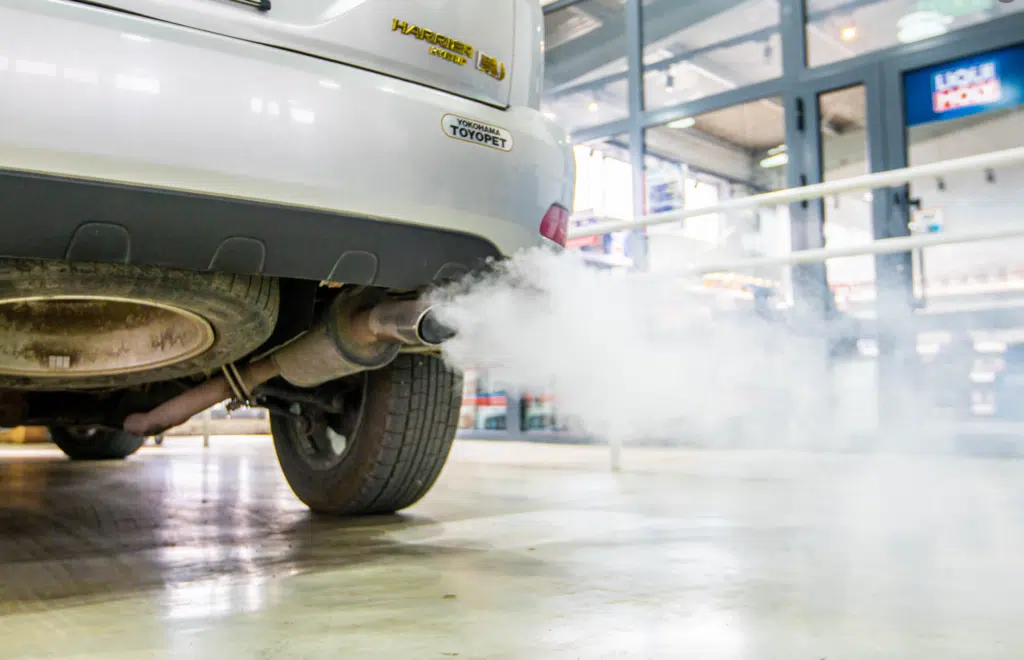Did you know that a car’s exhaust system plays a crucial role in its overall performance, redirecting toxic gases, reducing noise, and improving fuel efficiency? In this blog post, we will explore the ins and outs of exhaust systems, from their importance to the environment and our health to the various components that make them work. Strap in and get ready for an informative ride!
Key Takeaways
Vehicle exhaust systems are essential for performance, fuel efficiency and environmental impact.
Components such as the manifold, oxygen sensor and catalytic converter work together to reduce emissions.
Regular inspections and maintenance are necessary to keep your vehicle’s system functioning properly while complying with legal requirements.
The Importance of a Vehicle’s Exhaust System
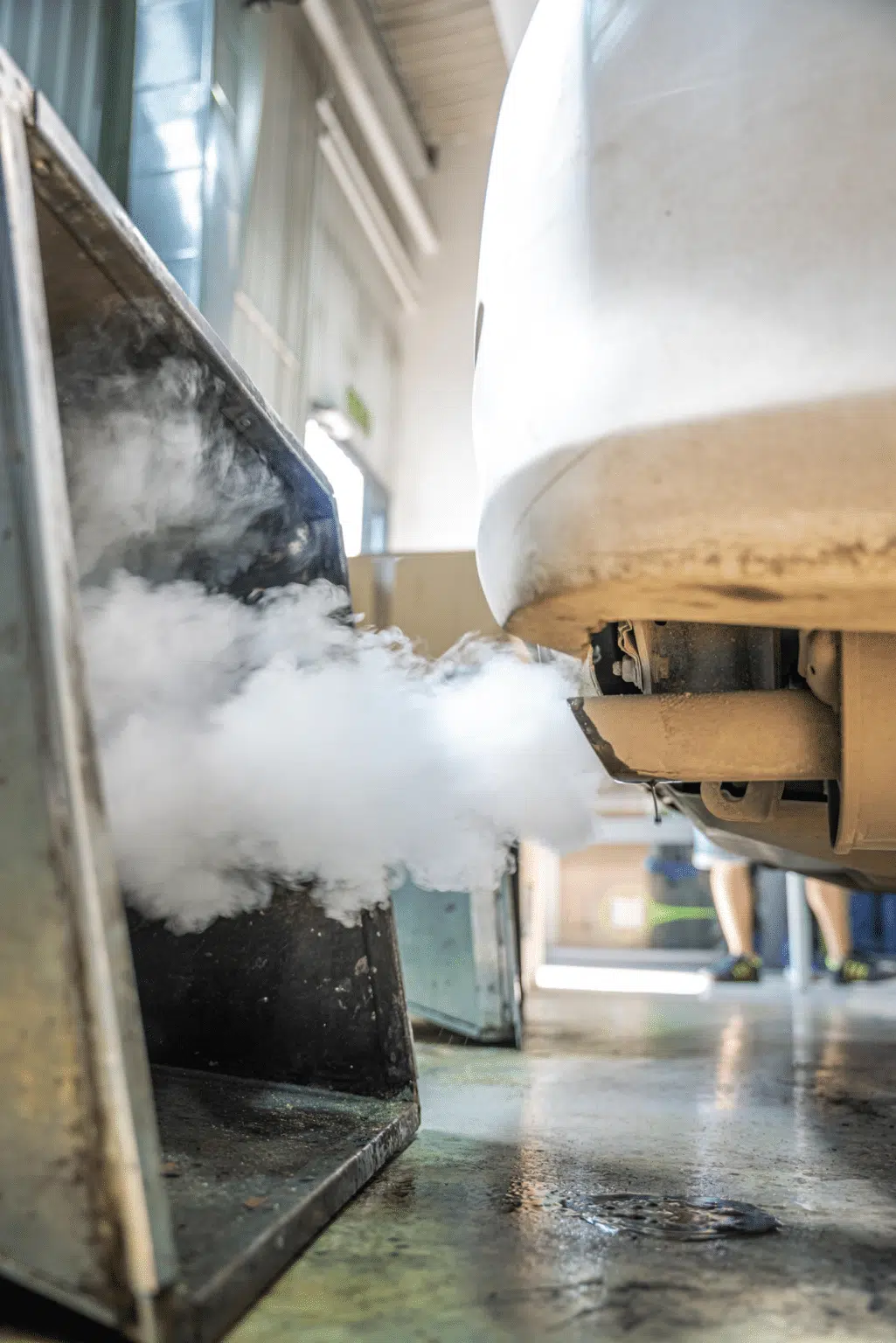
A vehicle’s exhaust system serves to redirect toxic gases, reduce noise, and enhance fuel efficiency through exhaust pipes. In doing so, it collects exhaust gases from the engine and utilizes catalysts to convert toxic gases into carbon dioxide and water vapor while also reducing exhaust noise.
Maintaining a car’s performance and minimizing the negative effects of harmful emissions on the environment and our health heavily relies on this intricate process.
Environmental Impact
Vehicle exhaust emissions have a detrimental effect on air quality and contribute to global warming due to the release of harmful gases such as carbon monoxide, hydrocarbons, and nitrogen oxides. As a result, car manufacturers are continually working on technological advancements to reduce their vehicles’ emissions and lessen their environmental impact.
Particulate filters are an advancement in vehicle exhaust technology. They filter soot and other harmful particles from the exhaust gas for a cleaner environment. Petrol engines with an OPF/GPF (Otto Particle Filter/Gasoline Particulate Filter) experience fewer obstruction issues in their exhaust systems compared to diesel cars. These innovations help mitigate the environmental repercussions of vehicle exhaust emissions.
Health Concerns
Exhaust emissions contain hazardous chemicals and harmful gases that can lead to health issues, especially for individuals living in urban areas with high traffic volume. Catalytic converters, a key component of the exhaust system, reduce the emission of hydrocarbons, carbon monoxide, and nitrogen oxides, which can be harmful to the atmosphere and our health.
Exposure to harmful emissions from a vehicle’s exhaust system can lead to respiratory problems, heart disease, strokes, allergies, skin irritation, and bronchitis. Additionally, immediate effects of exposure to diesel exhaust include irritation of the nose and eyes, alterations in lung function, headache, fatigue, and nausea.
Therefore, a well-functioning exhaust system plays a critical role in mitigating these health risks.
Get help for your car from our AI Car Expert!
Components of an Exhaust System

An exhaust system is composed of various components, such as the exhaust manifold, oxygen sensor, and catalytic converter. These components work together to direct exhaust gases down the exhaust system, reduce harmful emissions, and minimize noise.
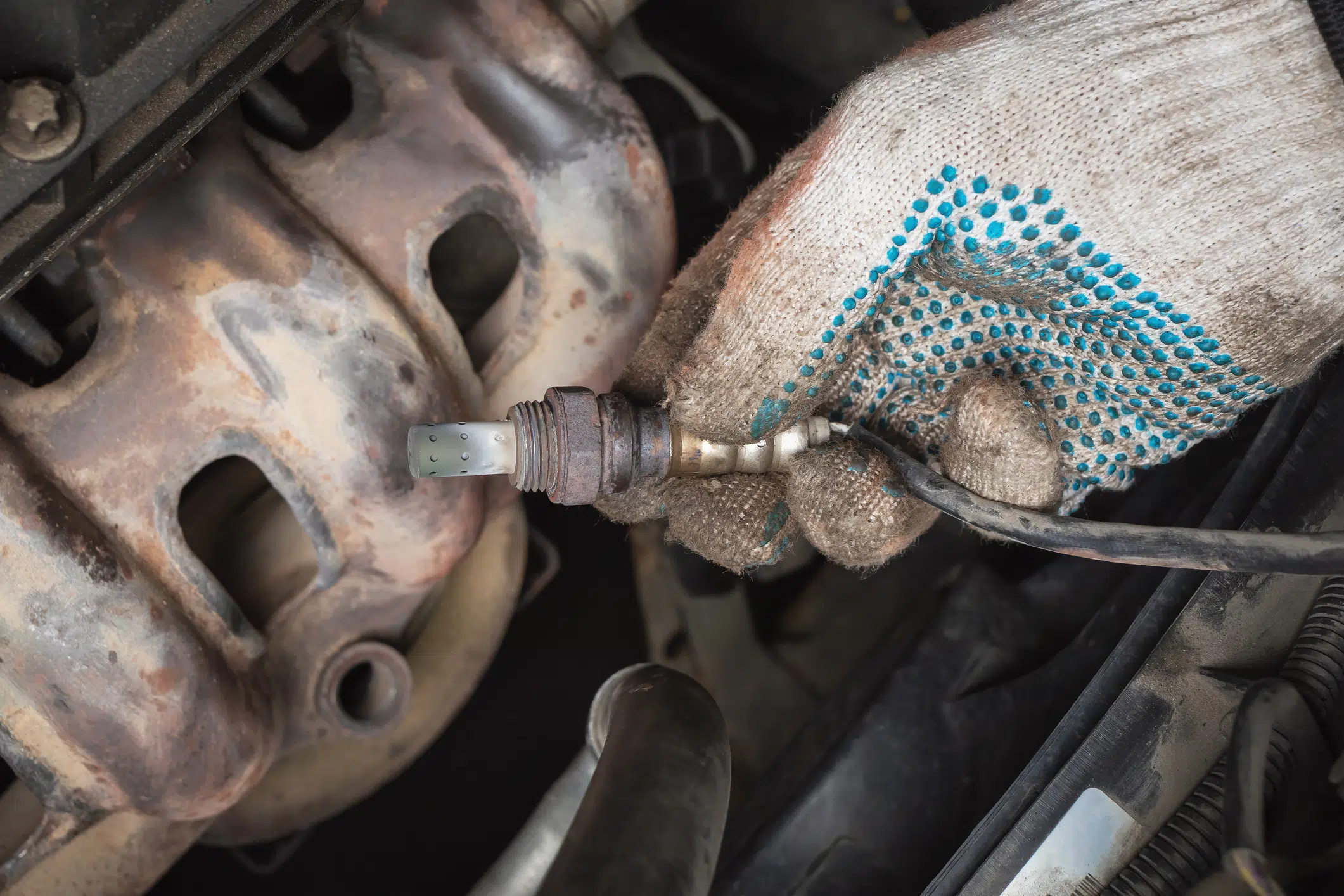
We will now examine the roles of these individual components and their contribution to the overall function of the exhaust system.
Exhaust Manifold
The exhaust manifold is an arrangement of metal pipes that attach to the exhaust side of the engine. Its primary purpose is to direct exhaust gases along the exhaust system. Improper mounting of the manifold can lead to engine performance issues, emphasizing the importance of correct installation and maintenance.
When functioning correctly, the exhaust manifold serves to:
Direct the exhausted exhaust gases into a pipe (or pipes) that runs along the length of the car
Reduce emissions and noise
Contribute to the overall efficiency and performance of the vehicle.
Oxygen Sensor
The oxygen sensor is an electronic device that:
Measures the proportion of oxygen in the gas or liquid being analyzed
In the context of exhaust systems, monitors the oxygen content of the exhaust gases
Sends a signal to the engine control unit to regulate the air-fuel ratio
Most modern cars feature two oxygen sensors. The first is placed before the catalytic converter and measures the levels of oxygen and pollutants after combustion. The second sensor is then located after the catalytic converter to measure the pollutants being filtered through it. By monitoring and optimizing fuel efficiency, the oxygen sensor plays a vital role in maintaining the overall performance of your car’s exhaust system.
Catalytic Converter
The catalytic converter is a vital component of the exhaust system that takes the form of a smaller and slimmer muffler. It is composed of ceramic blocks or beads coated with precious metals such as platinum, which enable a series of chemical reactions and processes to reduce hazardous pollutants from exhaust gases.
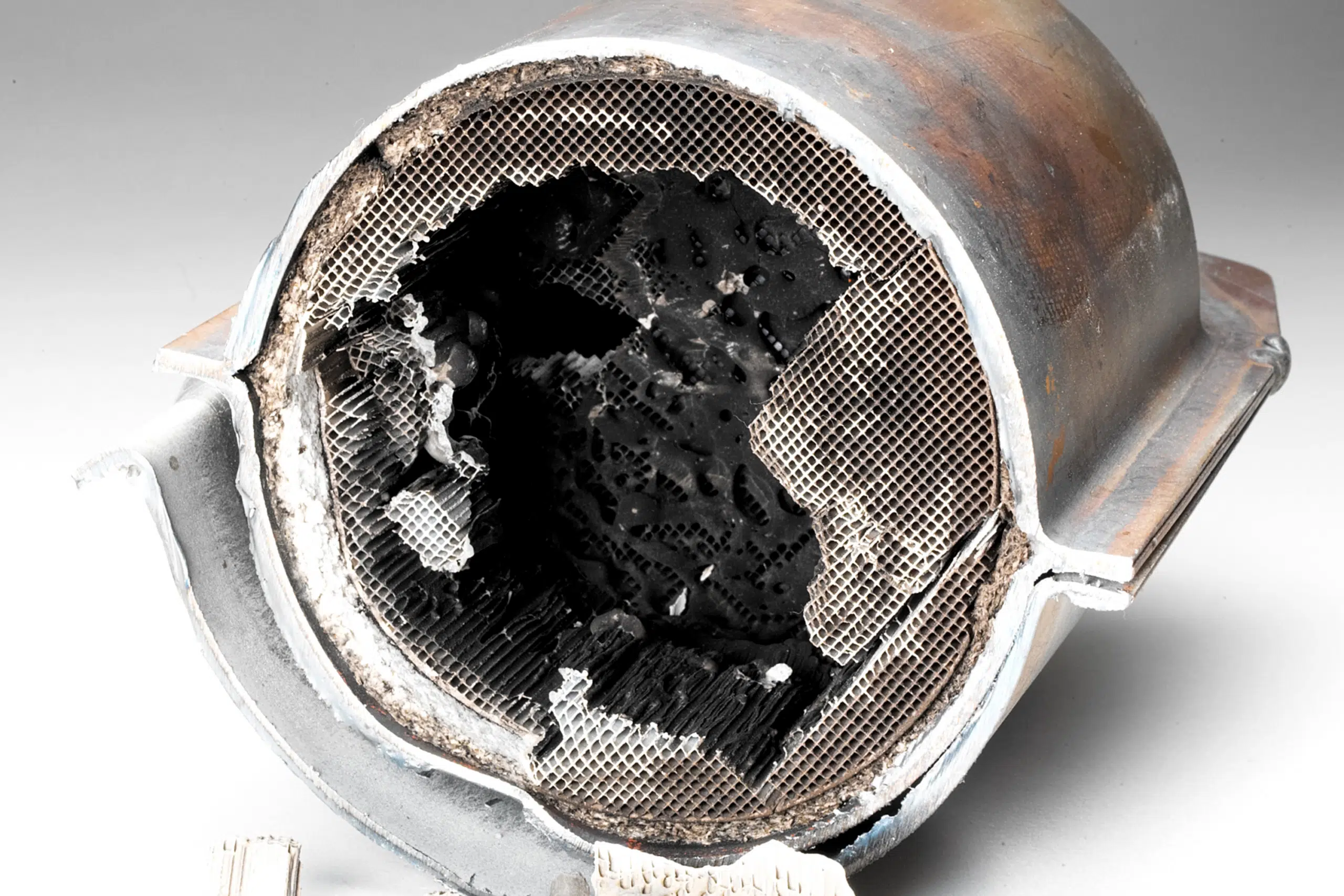
Legally, every vehicle must have a catalytic converter installed to lessen the emission of harmful substances like nitrogen oxides, carbon monoxide, and unburnt hydrocarbons.
A properly functioning catalytic converter that meets legal requirements is key to reducing harmful emissions and upholding your vehicle’s performance.
-
LIQUI MOLY Ceratec£20.40
-
Premium Oil Change Set£37.23
-
LIQUI MOLY Oil Sludge Flush£16.83
-
LIQUI MOLY Octane Booster£8.29
-
LIQUI MOLY Super Diesel Additive£7.17
-
LIQUI MOLY Diesel Particulate Filter Protector£8.10
-
LIQUI MOLY Radiator Stop Leak£6.20
-
LIQUI MOLY Fuel Injection Cleaner£10.02
Maintaining Your Car’s Exhaust System
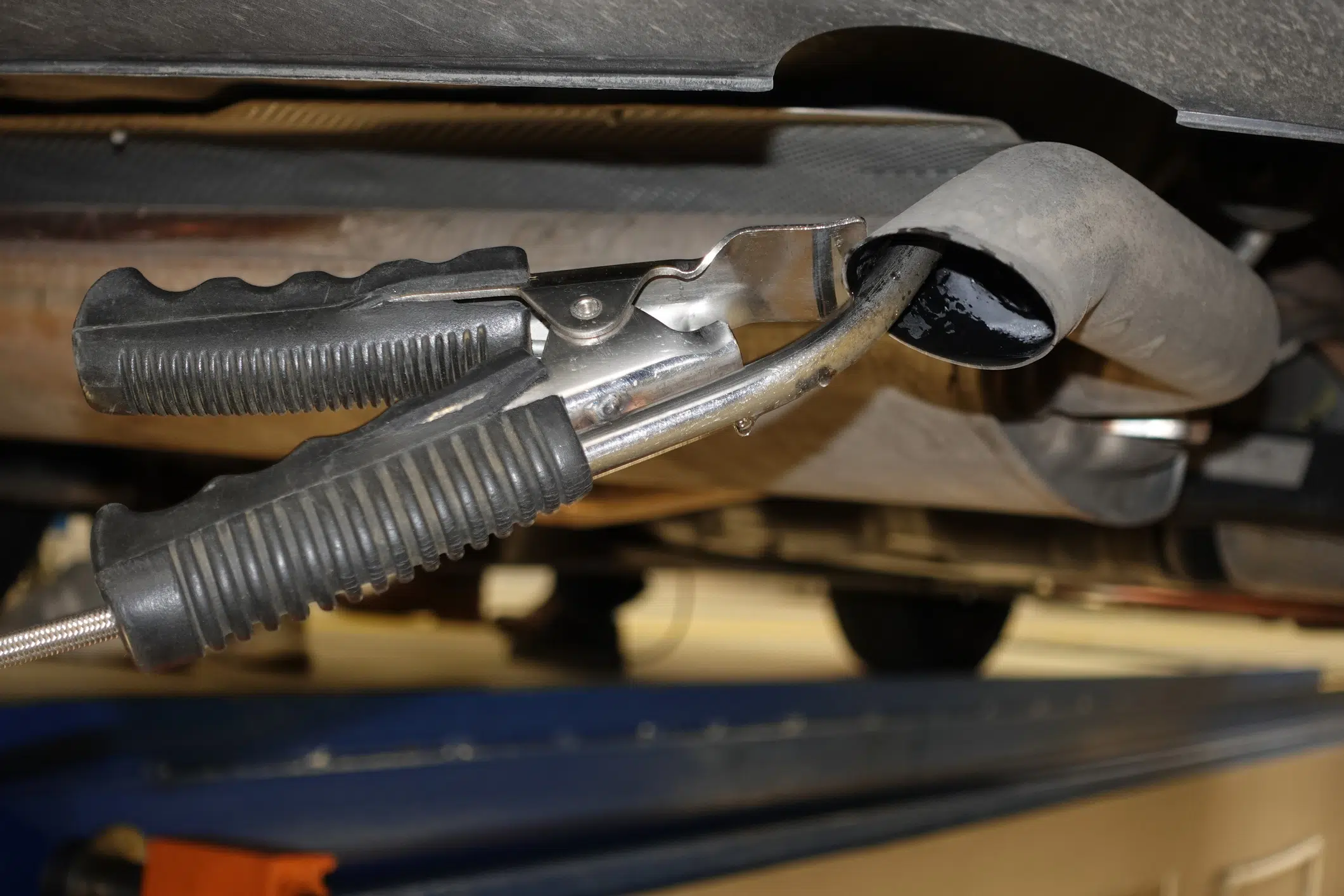
Regular maintenance and inspections are essential for keeping your car’s exhaust system in good condition and ensuring optimal performance. Factors such as corrosion, elevated temperatures, and impacts can impair your exhaust system and lead to decreased efficiency and increased emissions.
Taking proactive measures can stop minor issues from turning into more costly problems.
Regular Inspections
During routine inspections of the exhaust system, it is essential to check for signs of rust, holes, or damage, and replace any worn or damaged components as necessary. Internal corrosion, primarily caused by driving in metropolitan areas, can be particularly detrimental to the exhaust system. External corrosion, resulting from exposure to water, mud, and salt, can also degrade your exhaust system over time.
Conducting regular inspections can help identify potential issues early on, allowing you to address them before they escalate into larger problems. This practice aids in ensuring the longevity and efficiency of your car’s exhaust system.
Signs of a Failing Exhaust System
Indications of a malfunctioning exhaust system could include:
Fumes in the passenger compartment
Hissing or popping noises
Decreased fuel efficiency
Reduced power and acceleration
Excessive exhaust fumes
Illumination of the check engine light
If you notice any of these signs, it is advised to consult a qualified mechanic to diagnose and repair any exhaust system issues. Addressing these problems early can prevent more expensive repairs down the line and maintain your vehicle’s performance and efficiency.
Exhaust System Upgrades and Modifications

Upgrading or modifying your car’s exhaust system can provide numerous benefits, such as boosting performance, decreasing backpressure and heat, and improving the vehicle’s appearance.
Performance exhaust systems, custom exhaust tips, and other modifications can enhance your car’s overall performance and aesthetics while also reducing harmful emissions.
Performance Exhaust Systems
Performance exhaust systems, such as turbo-back or cat-back systems, can enhance power and torque output while decreasing exhaust heat. Additionally, replacing exhaust manifolds with headers is the most prevalent method of alleviating backpressure in an exhaust system. Exhaust heat management, which can be improved through the use of a ceramic coating applied through thermal spraying, further assists in reducing exhaust heat emissions.
The installation of a car exhaust system, particularly a performance exhaust system, can enhance your vehicle’s performance and secure its operation at full potential.
Custom Exhaust Tips
Custom exhaust tips are aftermarket accessories designed to provide a vehicle with a unique and stylish aesthetic. Installed on the end of the exhaust pipe, these tips offer numerous advantages, including:
Improved sound
Elevated performance
Superior quality materials
Increased exhaust flow
Not only do custom exhaust tips improve your car’s appearance, but they also enhance its overall functionality.

Upgrading your vehicle’s exhaust system with custom exhaust tips can personalize your car and simultaneously provide benefits of enhanced performance and exhaust flow.
Exhaust System Regulations and Compliance

Exhaust systems are subject to numerous regulations and compliance requirements, including:
Silencer and exhaust system requirements to limit engine noise
Restrictions on modifying exhaust systems
Regulations related to emissions control and exhaust standards
Compliance with local laws and regulations is imperative to avoid fines and penalties, and to maintain the performance and efficiency of your vehicle’s exhaust system.
Emissions Testing
Regular emissions testing is essential for ensuring that your vehicle complies with environmental standards and can detect any issues with the exhaust system. Emissions testing typically occurs as part of the MOT, wherein the vehicle’s emissions are tested using a meter.
If emissions testing is unsuccessful, it is recommended to take the vehicle to a qualified mechanic in order to diagnose and repair any exhaust system issues. Keeping abreast with emissions testing helps to keep your vehicle roadworthy and environmentally compliant.
Legal Requirements for Catalytic Converters
Catalytic converters are legally mandated in most countries to minimize the emission of harmful substances and must be regularly maintained or replaced if defective. Utilizing a non-standard catalytic converter can render a vehicle unroadworthy, so it’s crucial to ensure that your vehicle is equipped with a properly functioning converter.
If your catalytic converter is faulty, it is recommended that a qualified mechanic inspect it and replace it if necessary. Maintaining your catalytic converter in good working order helps to reduce harmful emissions and ensures your vehicle’s compliance with legal requirements.
How to clean the catalytic converter with LIQUI MOLY Catalytic System Cleaner Fuel Additive to reduce emissions?
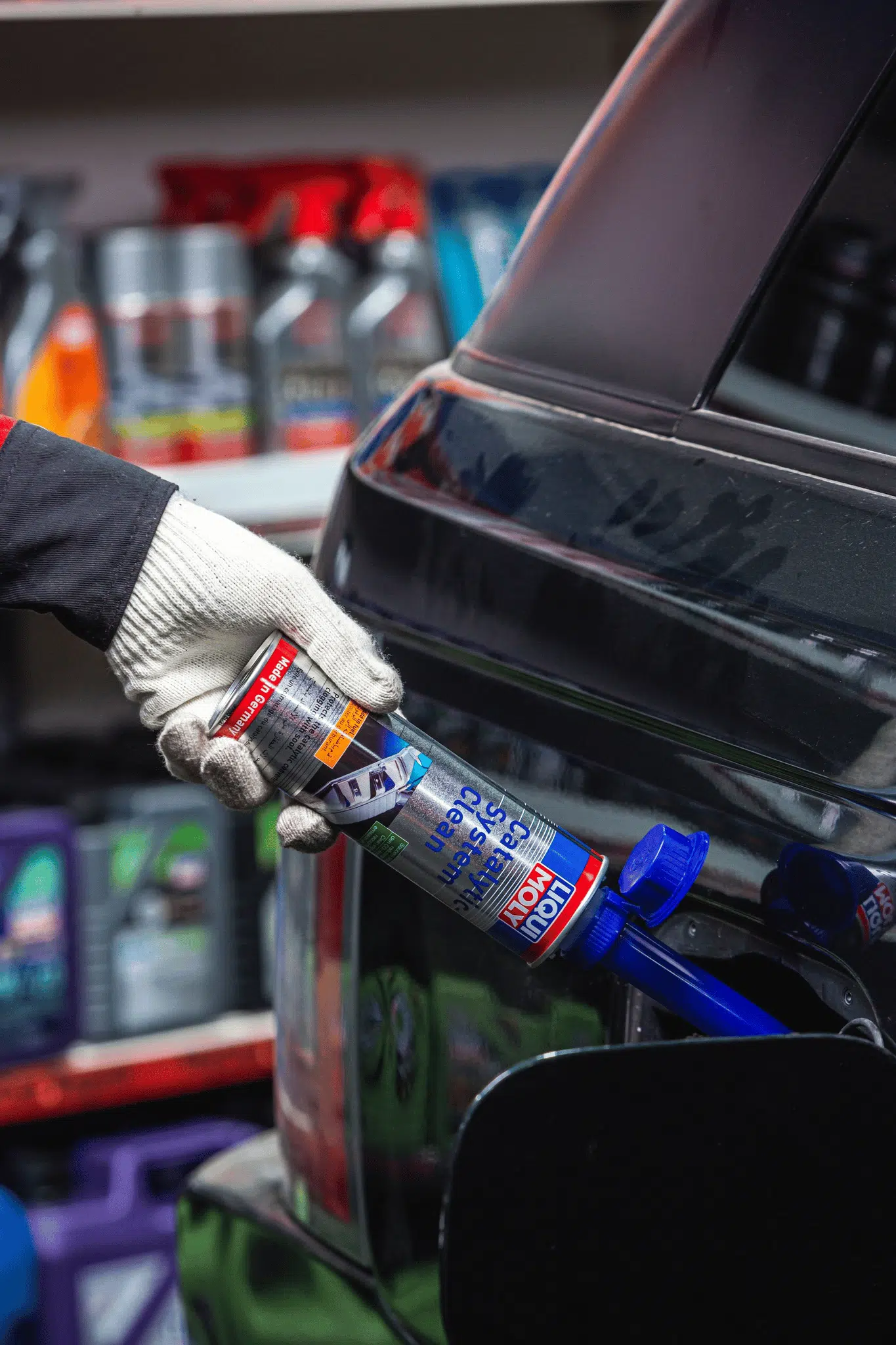
LIQUI MOLY Catalytic Clean Fuel Additive is a product designed to:
Clean and protect the catalytic converter in gasoline engines
Prevent the accumulation of soot in the catalytic converter
Clean the intake valves and combustion chamber
It is suitable for all gasoline engines equipped with a catalytic converter.
The use of LIQUI MOLY Catalytic Clean Fuel Additive involves adding the recommended amount to your fuel tank and operating your vehicle as usual. The additive will aid in cleaning the catalytic converter and reducing emissions, improving your vehicle’s overall performance.
To maintain the catalytic converter after using LIQUI MOLY, adhere to the following regular maintenance:
Perform oil changes and tune-ups as recommended by the vehicle manufacturer.
Ensure that the correct fuel is used for the vehicle.
Avoid overloading the vehicle with excessive weight.
Summary
In conclusion, understanding your vehicle’s exhaust system is vital for maintaining its performance, reducing harmful emissions, and ensuring compliance with environmental regulations. By regularly inspecting and maintaining your exhaust system, upgrading or modifying it to enhance performance and appearance, and complying with emissions standards, you can optimize your vehicle’s overall performance and do your part to protect the environment.
Remember to always consult a qualified mechanic for any exhaust system repairs or modifications and stay informed about local regulations and requirements. With proper care and attention, your vehicle’s exhaust system will continue to serve you well for years to come.
Frequently Asked Questions
Where is the exhaust system in a car?
The exhaust system in a car starts at the rear of the engine block at the front of the vehicle and collects exhaust gases from the cylinder head via an exhaust manifold, then diverts them through a single pipe.
This leads to the tailpipe and back box at the rear of the car, where the exhaust exits with a potentially altered sound depending on the design and size of the tailpipes.
What are the three parts of the exhaust system?
The three major components of the standard factory exhaust system are the exhaust manifold, catalytic converter, and muffler.
Each of these components plays an important role in reducing emissions and noise from the vehicle. The exhaust manifold collects the exhaust gases from the engine and directs them to the catalytic converter. The catalytic converter then converted to a catalytic converter.
Are exhaust fumes bad for your health?
Exposure to vehicle exhaust fumes can cause serious health problems, from skin irritation to lung cancer. The pollutants in the fumes can irritate the eyes and respiratory tract, and contain dangerous levels of carbon monoxide, which can cause headaches, dizziness, nausea, fatigue and even death.
What is the function of exhaust system?
The exhaust system’s primary function is to collect, remove harmful substances, reduce noise levels and safely discharge purified exhaust gases away from the vehicle occupants.
How can I maintain my car’s exhaust system?
Regularly inspect your car’s exhaust system, make timely repairs, and upgrade or modify it as needed to maintain its performance and efficiency.
